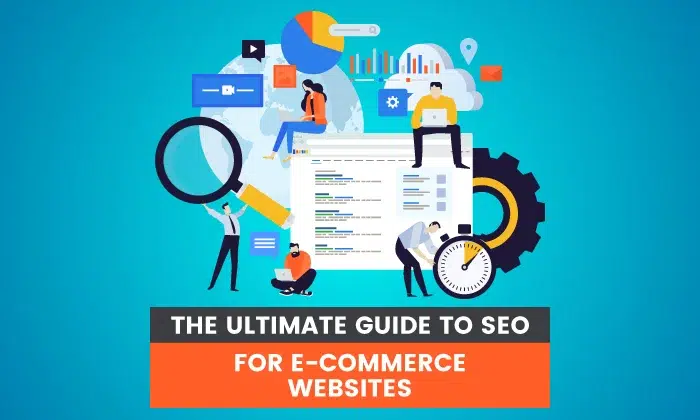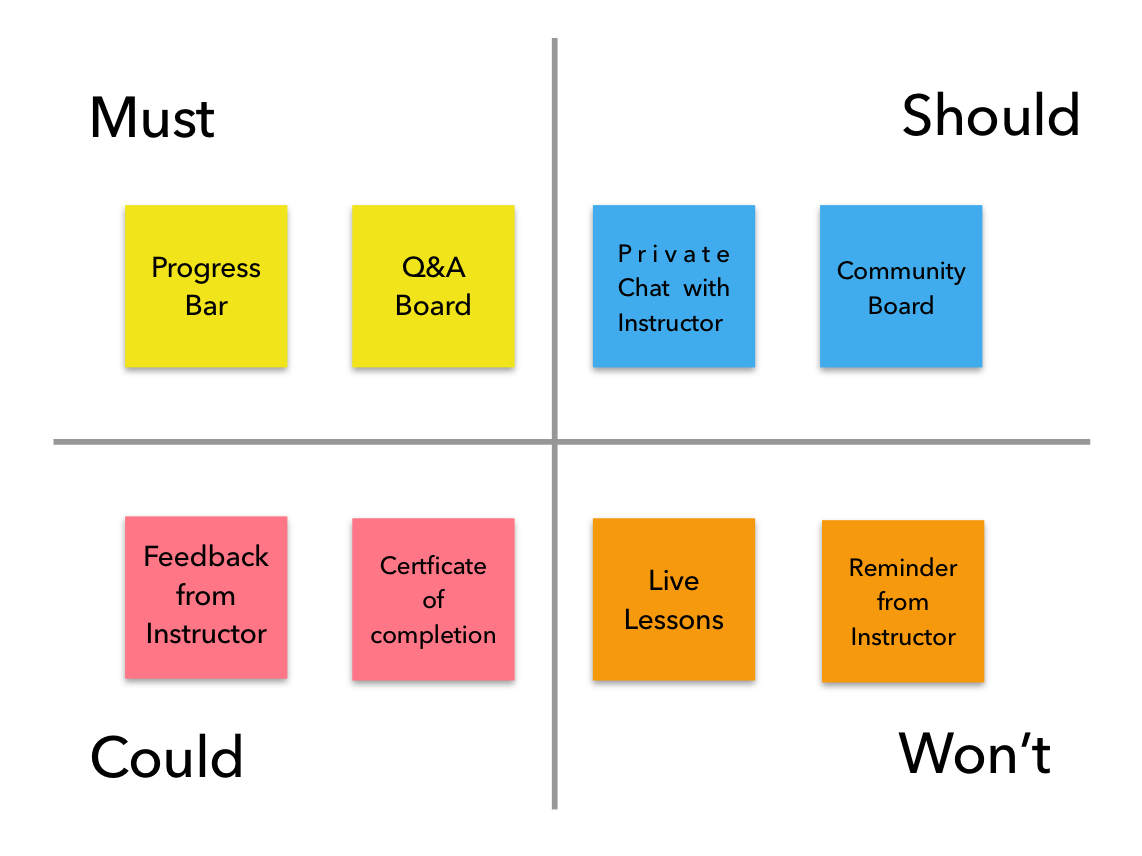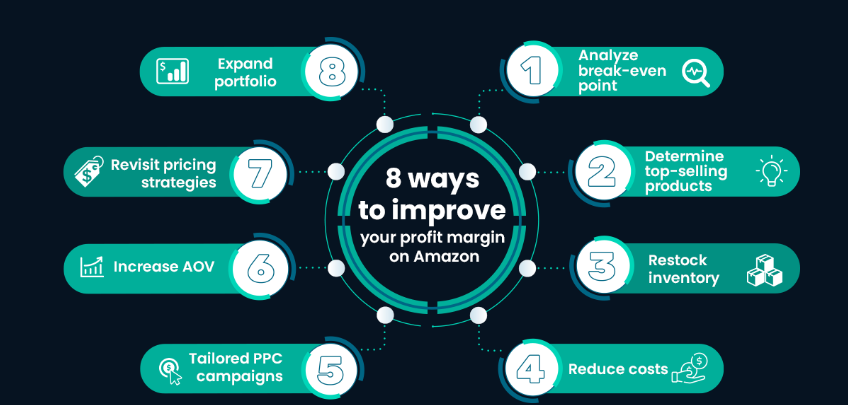Amazon has been a powerhouse in the ecommerce world since its launch, making it tough for competitors to keep up.
But there are several retailers out there that have managed to create strong brands and establish themselves as serious competitors against Amazon’s dominance.
So, how do they manage this? Through hard work, innovation, customer service and smart strategies Ð, these companies have proven that you can successfully compete with Amazon if you play your cards right.
In this blog post, Let’s take a look at how some leading companies are holding their own against AmazonÕs reign in the ecommerce industry.
8 Effective Strategies For Competing With Amazon In 2024
1. Build a Brand & Be the Brand!
When it comes to competing with Amazon, a massive online retailer that has become one of the most powerful companies in the world, small businesses may feel overwhelmed and defeated.
However, there is a way for entrepreneurs to survive in this highly competitive space: Build a brand. Be the brand!
The goal of building a brand is to differentiate yourself from your competition and establish an emotional connection with your consumers.
Consumers need to be able to trust the products a business sells, and they can only do this if they feel confident that the company stands behind its products and services.
Having a strong brand identity allows customers to understand what makes your product or service unique and why they should choose it over others.
It also helps them remember your company’s name when looking for similar products or services in the future.
Putting together an effective branding strategy requires careful thought and planning.
There are four key elements: establishing an identity, creating strong visuals, creating engaging content, and developing customer relationships.
First, entrepreneurs must create an identity for their business that will be easily recognizable by their target audience.
This should include aspects such as your company name and logo, tagline, colour palette, font selection, and any other visual elements associated with your brand (e.g., mascot).
These components should be consistent across all platforms to ensure that customers recognize your brand quickly, whether they encounter it in print material, online advertisements, or even on store shelves.
Second comes visuals, which include everything from product photos and website design to packaging designs and promotional materials such as posters or brochures.
Your visuals should reflect the personality of your business. Use colours that evoke emotion to attract attention. Incorporate both text and images.
Create contrast between elements. Employ white space for legibility.
Apply consistent branding across materials (so people can easily recognize you), and make sure all graphics fit within standard sizes so they can look professional across various digital platforms (such as social media sites).
Third is engaging content—and this, too, must reflect the values of your business while also providing interesting information about you or related topics that demonstrate expertise in what you do best.
Content marketing efforts could include blog posts on topics relevant to your industry/product/service, using infographics as part of content campaigns, writing press releases about new product launches or special offers/promotions, and creating videos.
Finally comes customer relationship building, which occurs through communication channels such as email newsletters with helpful tips or industry trends related to their purchase history/interests, responding promptly to emails.
Make sure all team members are aware of customer service policies at all times so each interaction maintains consistency throughout customer journey stages – from initial contact through closure stage.
Thus creating trust and leading potential buyers into lifelong customers who will help spread the word about you via referrals & recommendations!
Building a strong brand identity through visual design elements, compelling content strategies, and excellent customer relationship-building practices.
Small businesses have a chance at surviving & thriving against even the biggest e-commerce giants like Amazon!
2. Focus on Customer Retention
Customer retention is the lifeblood of any successful ecommerce business, but it can be especially challenging to compete with Amazon and keep customers coming back.
In order to survive and thrive in the face of such stiff competition, other ecommerce businesses must focus on providing exceptional customer service and developing creative strategies to retain their loyal followers.
The key to effective customer retention is understanding what drives customers away from a business in the first place.
For ecommerce businesses, this could include things like slow delivery times, limited product selection or a lack of competitive prices.
To combat these issues, businesses need to develop strategies that address the root causes of customer churn and provide value-added services that will keep them coming back.
One key component of customer retention is providing high-quality customer service that meets and even exceeds customers’ expectations.
Companies should invest in staff training so they can respond quickly and accurately to customers’ questions and handle orders efficiently.
They should also make sure their website is easy to use; customers who are frustrated by navigation difficulties or checkout glitches are more likely to abandon their shopping carts for another retailer’s site.
Another important element of customer retention is building relationships with customers through loyalty programs, personalized discounts, or promotions.
These rewards can help increase engagement with existing customers as well as attract new ones.
Companies should also consider using specialized marketing techniques, such as email campaigns or social media giveaways, that target specific segments of their audience with tailored messages that appeal directly to them.
This can help foster long-term relationships between a company and its customers while also driving sales growth.
Finally, companies should take advantage of the data they have available on their current customers to identify areas for improvement in serving their target audience’s needs.
By analyzing customer purchase history, location data or other relevant metrics, companies can gain valuable insights into how best to serve their market segment’s needs more effectively.
Overall, competing with Amazon requires businesses to think strategically about how they can better serve their existing customers while also attracting new ones through innovative tactics like loyalty programs and targeted marketing efforts.
Take steps such as investing in staff training for improved customer service experience or taking advantage of big data insights for personalized promotions and discounts, which offer more value than Amazon’s offerings.
Companies can position themselves ahead of the competition—and ensure continued success in an increasingly competitive ecommerce landscape.
3. Focus on eCommerce SEO
Ecommerce SEO is a crucial element for competing against giants such as Amazon, and understanding the fundamentals of how to optimize your website can give you an edge over them.
Search engine optimization (SEO) is the practice of optimizing a web page or website to appear higher in search engine results for specific keywords.
Optimizing your ecommerce store for SEO can help you drive more organic search traffic, increase conversion rates, and gain valuable insights into how customers interact with your business online.
The first step to creating a successful ecommerce SEO strategy is understanding the basics of search engine optimization.
This includes keyword research and analysis, on-page optimization, link building, content creation, and more.
All of these elements play an important role in ensuring that you are visible to potential customers when they enter relevant keywords into a search engine.
Keyword research is one of the most important components of any ecommerce SEO strategy.
Identifying the best keywords to target will help you rank higher in search engines and attract more qualified visitors to your site.
When selecting keywords, it’s important to consider long-tail terms that are more specific than general terms related to your products or services.
On-page optimization involves ensuring that all elements on each page are optimized for search engines.
Title tags, meta descriptions, H1 tags, and image alt—texts are all examples of elements that should be optimized for SEO purposes.
Additionally, it’s important to ensure that all pages on your website have unique titles and meta descriptions so as not to confuse potential visitors who may be searching multiple pages on any given subject matter.
Other strategies include internal linking structures between pages (which help Google understand what content relates together) and mobile-friendly design (which helps users find information quickly while on their smartphones or tablets).
Structured data (which helps Google determine what content is most relevant), dynamic menus (which make navigating websites easier) and more.
Link building is also an essential element in any successful ecommerce SEO strategy as it allows other websites to link back to yours as a reference source or authority on certain subjects related to your industry or products/services offered by your business.
Quality links from reputable sources will help boost rankings while ensuring visitors know where they are coming from and why they clicked through in the first place. This strengthens trust while driving conversions.
Additionally, blog content creation can be used as part of an overall link-building strategy; regularly publishing articles that provide value will not only help boost organic traffic but also help build relationships with other businesses.
Who may be willing to share links with yours if given appropriate credit for their work/information provided?
Finally, using analytics tools like Google Analytics can help you track key performance indicators such as page views per visit and visitor engagement rate so you can better understand how people are interacting with your website.
Once they arrive there, this data can then be used to optimize various areas based on user behaviour trends, which could lead directly to increased sales!
Overall, understanding the basics of ecommerce SEO is essential if you plan on competing against large marketplaces such as Amazon.
Investing time into researching keywords related to your products/services, creating high-quality content around those topics, and optimizing existing webpages accordingly with structured data, internal linking structures, etc.
Coupled with smartly designed campaigns focusing on offsite activities such as link building and analytics tracking, this will go a long way towards helping you establish yourself within this competitive landscape!
4. Build an Email List:
As an ecommerce business, there is no denying that Amazon dominates the online marketplace.
For small businesses competing against one of the most recognized brands in the world, it can be difficult to stand out and attract customers away from Amazon’s platform.
One effective strategy is building an email list. An email list allows you to target potential customers directly with information about your company, product updates, and sales.
It also gives you a chance to develop relationships with your customers and nurture them into loyal brand advocates.
Building an email list does not happen overnight; it takes time and effort to develop a large base of subscribers who are genuinely interested in your offerings.
Here are some tips for creating a successful email list that will help you compete with Amazon:
1. Create content designed to engage your audience.
2. Utilize social media platforms like Facebook and Twitter as well as search engine optimization (SEO) techniques when promoting your content so it reaches the right people at the right time.
3. Offer exclusive deals through email only once someone subscribes.
4. Send relevant emails at optimal times. Don’t send too many emails; instead, focus on sending quality.
5 . Track results to keep track of how many people open each email you send out and which links they click on using analytical tools.
5. Offer Enticing Discounts:
Offering enticing discounts is a great way for ecommerce businesses to compete with Amazon and other large online retailers.
Discounts have long been a popular way for businesses of all sizes to incentivize customers to purchase their products and services.
Whether it be a percentage off, free shipping, or even a buy one get one free offer, discounting has the potential to attract more customers and increase sales.
Companies can use discounts to compete with Amazon in several ways. For starters, they can offer discounts on certain products or services that they think will be popular among customers.
This could include offering limited-time promotions on highly demanded items, such as holiday gifts or new releases.
It could also involve offering discounts on certain categories of products, such as electronics, apparel, or books, throughout the year so that customers feel incentivized to shop there again and again.
Discounts can also be used as part of loyalty programs or customer loyalty incentives.
Companies that offer loyalty programs often reward customers who shop frequently or refer friends with points they can use towards future purchases.
Offering discounts through these loyalty programs encourages customers to continue shopping at the store rather than turning to Amazon for their needs.
Companies may also choose to offer coupon codes either through email marketing campaigns, social media posts, blogs, or affiliate websites to draw people back in and encourage them to return regularly.
Coupons are particularly effective when used alongside product launches, as they create an incentive for people to try something new from the company’s website instead of opting for Amazon’s version first.
Finally, companies should ensure their pricing structure is competitive so that their discounts and promotions truly stand out against Amazon’s prices.
Staying up-to-date on industry trends as well as competitors’ pricing structures will help brands keep up with changes in prices and maintain an advantage when it comes time for consumers.
Discounting can be a very effective strategy when competing with Amazon; however, it should be done thoughtfully and strategically in order to maximize results while still making sure your profits stay healthy, too!
Knowing what types of discounts work best for your specific industry and target audience is key—it takes time but research pays off when you’re able to present attractive offers that clearly set your brand apart from its competition.
6. Prioritize Website User Experience:
Prioritizing website user experience is essential in ecommerce, as it has the power to draw users in and give them a great shopping experience.
This is particularly true when competing with Amazon, a giant of online retail that has millions of customers worldwide.
To stand out from the competition and thrive in the ecommerce landscape, companies need to focus on giving their customers an enjoyable website user experience.
User experience (UX) encompasses all aspects of how a customer interacts with an online store or marketplace.
It includes everything from the design elements of the site or app, such as the navigation menus and checkout process, to the ease and speed of loading pages that are crucial for keeping customers on-site longer.
Having a positive UX can also help build trust between shoppers and online retailers, which can lead to repeat business and higher sales over time.
1. Ensure Smooth Navigation & Easy Checkout Process:
One way to make sure customers have a positive experience on your site is to make sure navigation within it is seamless.
This means creating logical menus that lead users through each stage quickly and easily – all while providing enough content for shoppers to make informed decisions about purchases.
Additionally, streamlining your checkout process by asking only necessary information helps keep customers engaged throughout their journey and gives them more confidence in your brand.
2. Leverage Advanced Technology:
Companies looking to perform better than Amazon should consider using advanced technology, such as Machine Learning algorithms that can predict customer behaviour before they even land on their page.
By understanding who’s visiting your site or mobile app, you can then tailor content specifically for them – something Amazon does very well – showing them products they might be interested.
3. Personalize Content:
Enhancing UX further will require companies to provide personalized experiences based on customer profiles that include browsing history, purchase history, location data, etc.
While this may seem like an expensive endeavour, many tools are available now that can automate part of this process, such as AI-powered recommendation engines like Instarec, which make personalization faster and easier than ever before.
4. Optimize Mobile Experience:
Investing in creating mobile-friendly websites is key since more than half of all web traffic comes from smartphones nowadays, so it’s essential for businesses.
Several techniques can be used, such as compressing images to ensure they load fast on smaller screens or utilizing media queries to adjust content according to the user’s device.
These are just some ways companies looking to compete with Amazon can prioritize website user experience in order to stay competitive in ecommerce marketplaces today.
But there are other opportunities available too!
Leveraging data insights from analytics platforms such as Google Analytics helps gain a greater understanding of what works best for customers when designing new experiences.
This will enable businesses to tailor these experiences accordingly with maximum efficiency at minimum cost without compromising on quality service delivery along the way!
7. Don’t Sell the Exact Same Products as Amazon:
In a world where Amazon is increasingly dominating the eCommerce landscape, it can be intimidating for small and medium-sized businesses to compete.
While Amazon certainly poses a formidable challenge, that doesn’t mean there isn’t room for other players in the eCommerce space; countless companies have managed to carve it.
Out their own niche by differentiating their product offerings from those of their giant competitor.
Here are just a few ways successful eCommerce competitors have been able to create their competitive edge without directly competing with Amazon on price or products.
1. Focus On Niche Markets
Amazon offers an incredibly broad selection of products and caters to the needs of the mass market.
By contrast, many successful eCommerce competitors focus on more specialized markets, offering unique products and services tailored specifically to these narrow niches.
Similarly, beauty subscription boxes like Birchbox offer targeted samples of makeup and cosmetics tailored to each customer’s individual needs, taking advantage of both limited editions and exclusive collaborations.
2. Provide Unique Experiences
Another way successful eCommerce competitors differentiate themselves from Amazon is by providing experiences rather than just products.
Companies like Casper and Tuft & Needle have seen success by combining mattress sales with virtual sleep consultations or educational content related to sleep health something that goes beyond simply selling mattresses online like Amazon does.
3. Partner With Brick-and-Mortar Retailers
Finally, some companies have managed to find success by leveraging brick-and-mortar partnerships rather than going head-to-head with Amazon online.
For example, Walgreens’ drugstore chain has partnered with eBay to allow customers to pick up orders from any of its over 8700 locations across the US.
Likewise, Walmart has partnered with Google Express to give shoppers access to not only its physical stores but also Google’s various digital platforms—both providing customers access.
While it may seem daunting for smaller businesses looking at the ever-growing presence of Amazon in the eCommerce space, there are still plenty of ways for these companies to stand out even in an increasingly competitive marketplace.
Whether it’s through catering specifically towards niche markets or providing unique experiences that complement their product offering.
By leveraging strategies such as partnering with brick-and-mortar retailers or focusing on a specific product area that falls outside of what is available on Amazon itself.
Businesses can still manage to differentiate themselves from the competition and increase their chances for success even in today’s highly saturated marketplaces.
8. Don’t Sacrifice Margins on Amazon:
One of the most common challenges when competing with Amazon remains finding ways to keep margins from eroding.
While Amazon is known for its competitive pricing strategy, there are still options available for those hoping to maintain a competitive edge.
With some strategic planning, e-commerce retailers can successfully optimize their pricing strategies and protect their profits.
One of the best places to start when it comes to margin protection is understanding your current pricing strategy.
Before making any changes, it’s important to understand your most profitable products and how they compare to other retailers in terms of prices.
This will give you a better idea of what you need to do to remain competitive in the market. It’s also important to take into account any discounts or promotions that may affect your margins.
Once you have a better understanding of where things stand, it will be easier to make tweaks and adjustments that allow you to protect your profit margins while remaining competitive with larger players like Amazon.
Next, consider looking at different pricing models that would allow you to optimize your profits without sacrificing competitiveness.
One option could be dynamic pricing, which adjusts prices based on demand and competitor activity. If done correctly, dynamic pricing can help maximize revenue over time.
Another model could be subscription-based, where customers pay a fixed monthly fee for access to certain products or services.
This model has been successful in many industries and could benefit companies hoping to drive recurring revenue while maintaining healthy margins.
Finally, remember to offer value-added services or extra features that may not necessarily cost customers more but provide them with additional value or convenience they wouldn’t otherwise get elsewhere.
For instance, offering free shipping, product warranties, or even bundles can entice consumers who may otherwise turn away due to higher price points than competitors like Amazon may offer.
As competition continues to rise among ecommerce retailers, protecting profit margins becomes increasingly more important than ever before—but it doesn’t have to be an impossible challenge.
Companies can successfully compete with Amazon by carefully reviewing their current pricing strategy and considering new approaches, such as dynamic pricing and subscription models alongside value-added services.
Quick Links:
- Business Ideas with Low Investment in India That Are Most Profitable
- What Must Entrepreneurs Assume When Starting a Business?
- Maximize Your Success: The Benefits of LMS for Your Business
Conclusion: Competing With Amazon In 2024
While Amazon will continue to be the dominating force in the ecommerce world, there is still room for other companies to succeed.
By understanding how Amazon works and using that knowledge to their advantage, these companies have been able to level the playing field a bit and offer shoppers an alternative to the Everything store.
What do you think is the key to success for these businesses? Is it possible for new businesses to enter the market and compete with Amazon? Let us know your thoughts in the comments below.







